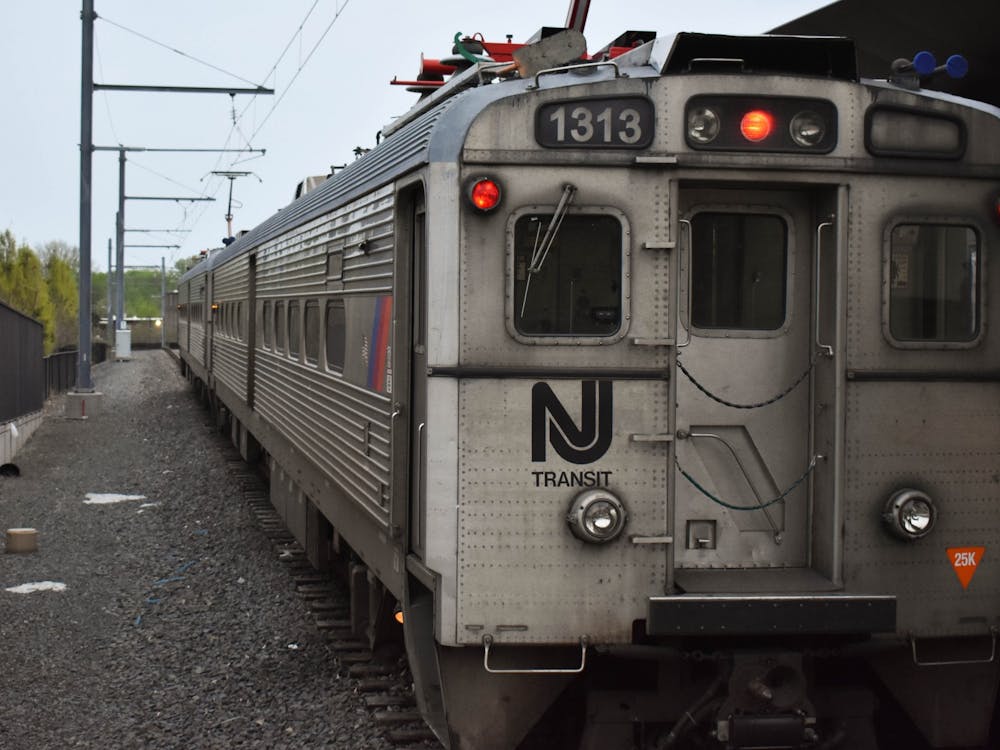Princeton University has been ranked No. 1 nine out of 10 times by U.S. News & World Report. After temporarily yielding to its crimson nemesis in 2009, the University swiftly reclaimed top status in the 2010 rankings by graciously sharing the spotlight. This ongoing rivalry between Princeton and Harvard, the two top schools in the nation, is matched by the fierce pride emanating from the universities’ student bodies. Here, orange is more than a color; it is a state of being. Here, one is socially accepted while appearing prepared for Halloween all year round. This adornment is not only embraced, it is encouraged and applauded.
In the nature of the competitive spirit, jabs at our chart-topping counterpart are inevitable. Comparisons, criticisms and commentary abound when Princetonians defend the superiority of the University. Acknowledging that this behavior comes with the territory, I find myself in a sticky situation. I am a proud Princetonian who simultaneously sports a familial tie with Harvard. One year my senior, my crimson-loving sister has succumbed to the lure of Cambridge, Mass. The result of such a precarious situation is entertaining. Microcosms of the debates between college students are staged at our family’s dinner table. Playful jests are used as comparative tools, juxtaposing the pros and cons of each university. These squabbles are harmless among loved ones, providing ways in which to discuss our time spent away from home. On campus, does this behavior hold just as much innocence?
University competition is the result of human nature set on a scholarly frontier. This friendly contest may be what drives us on, what challenges us to work our hardest. At Princeton, we push ourselves beyond everyday boundaries. Our initial contention for acceptance into the university is just a launching pad, the first step onto the road paved with competition. Here, not only do we compete with our peer institutions, we compete among ourselves. We duke it out for seats in classes, for spots in certain activities and for the coveted, yet ever elusive, A-plus. After our four years are complete, we will face the same situation as we apply for graduate programs and seek out opportunities in the job market. The cycle is never-ending.
Competition is a part of our history and is alive in our culture. The game may have evolved since the very beginning, but the principles are still the same. Modern-day politicians have adapted and expanded upon the strategies used by our predecessors, thus bringing historical tactics through the ages. Competition is in our blood and reveals itself in behavior’s smallest nuances. Though this may be perceived in a negative light, perhaps this is what keeps our society in motion. If we are not competing with others, we are competing with ourselves. We constantly look to be better than we once were, to improve on what we once knew. I’ll take this over apathy any day.
Our ivy-covered contest can best be compared with history’s classic competitors. Alexander Hamilton and Aaron Burr, George Bush and Al Gore, *NSYNC and The Backstreet Boys, Harry Potter and Twilight, and the list continues. Sides are chosen, lines are drawn, and the debates get heated. This same behavior is projected onto campus when Princetonians compare themselves with peer institutions. Harvard students are going without hot breakfasts, orange-clad students murmur, and Harvard’s faculty lament cookie-less meetings. In this case, however, these discussions serve as a unifying force among otherwise competitive students. Princetonians can rally behind an orange sword aimed at a crimson-colored shield, creating cohesion in the process. Here, rivalry brings us together. We are distracted from our inner competition and find a common cause to support from inside our orange bubble. It is in this situation that I must strategically navigate a split path. With a strong allegiance to my University, I find my wardrobe fully equipped in the event that there is a full-scale battle waged between the top two schools. At the same time, however, I foster an underlying respect for our rival. While mentioning this other prestigious university to Princetonians may be akin to saying “Voldemort” aloud to Hermoine Granger, I just think of my sister. Competition halts and family values take over.
In light of this discovery, I realize that the cohabitation of challenging views is possible. My family represents a simple version of this ideal. Two students from contending universities happily reside under the same roof and actively stand behind both institutions. I proudly sport my stripes while my sister promotes her crimson allegiance, and vice versa. The competition that could potentially set us apart is what brings us together. In society, the drive that puts people at odds simultaneously joins them in the pursuit of a common goal. In an interesting aside, maybe my sister and I should form a coalition and take down the bulldogs in New Haven; they wouldn’t stand a chance. Oh, how the cycle continues.
Samantha Batel is a freshman from Greenvale, N.Y. She can be reached at sbatel@princeton.edu.







